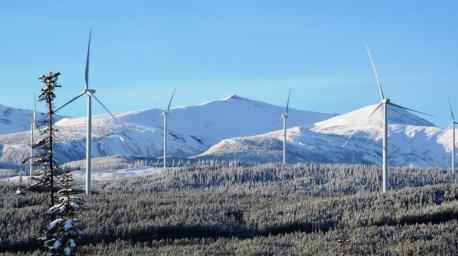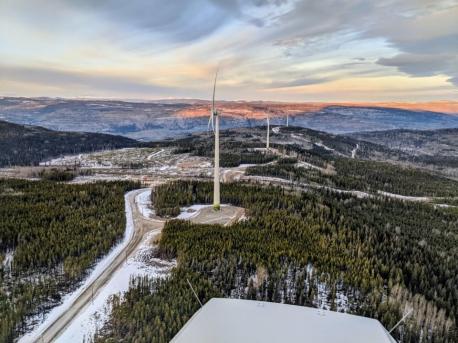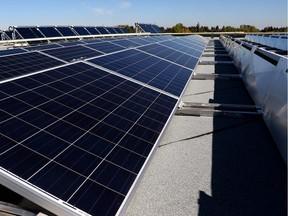Results: This is part 2 of a survey on power supply. Part 1 discussed ways to increase supply to meet increasing demand and/or demand can be reduced. Part 2 is how lobby groups and other interests are working to sabotage existing supply based on naive assumptions.
Published on 06/07/2022
To de-carbonize Canada's power grid, the country will have to increase its wind and solar capacity 18-fold by 2050, according to The David Suzuki Foundation. The report calls for nearly a tripling in the electricity system in Canada — and all of it coming from wind and solar. The report suggests that 100 per cent zero-emissions electricity is possible, affordable and reliable. Pursuit of this goal will change Canada's power landscape - literally.

QUESTIONS
GO to COMMENTS
Comments
1.
1.
Between 2005 and 2020, utilities halved emissions from power generation, largely by phasing out coal and oil-powered plants. The loss of capacity while demand increased caused rolling blackouts in some areas. As the world increasingly electrifies, so will the need to power devices, homes, workplaces and cars. To supply that energy while moving away from fossil fuels will require the construction of more than 2,000 wind turbines and 160 10-megawatt solar farms (a combined 650 hectares of solar panels) EVERY YEAR across Canada, according to the report. What are your thought regarding what would be needed to meet this goal?

The goal of 6 new wind turbines every day and a new solar farm every 3 days is unrealistic and unachievable without significant increases in taxation to pay for it all. A more realistic goal should be set and the transition steps should follow common sense more than naive climate fanaticism.
20%
372 votes
The energy and other resources consumed and the pollution generated in the manufacture and installation of all those wind turbines and solar panels are ignored in the projections of benefits to the planet. While this may provide environmentalists with a stronger case, it is a false narrative that should be challenged.
22%
423 votes
This goal is realistic and can be achieved without fundamentally changing the way of life for ordinary citizens or ruining the economy. We just need to make the commitment to change.
20%
386 votes
Other (please specify)
2%
40 votes
Not Applicable
46%
873 votes
- My son's father in law has solar panels on his farm. The power company charges a penalty if they return too much electricity to the grid which restricts him from adding more panels.
- No
- No. I live in a huge city. There's no where to put them. Solar on building roofs might make more sense.
2.
2.
It took Tesla et al rather than politicians to create demand for electric vehicles. Only when owning one provides better value and creative financing makes purchasing one within reach will there be the switch in North America we see in Europe (where distances are shorter, gas prices higher and traffic more congested.) Until then ownership remains beyond reach. Just as well. A wholesale switch to electric vehicles is beyond the capacity of the power grid. For example during a winter cold snap in Alberta where ave. temps were -22 C for 3 weeks it needed an average supply of 10,500 MW (megawatts) .When running at MAX capacity, solar can provide 736 MW and wind 2,269 MW. But during these biting cold days, solar ran at just 2.64 % of capacity and wind ran at 29.5 per cent of capacity. If we relied on solar and wind, we would have had rolling blackouts and people would have died But fossil fuels came to the rescue. Alberta's gas generators operated at 71 per cent. and coal operated at 87.5 per cent. In total, during those 3 weeks, gas provided 69.7 per cent of our power, coal 18.7 per cent, wind 6.4 per cent, biomass 2.7 per cent, hydro 1.6 per cent, dual fuel (coal-gas co-generation) 0.7 per cent, and solar just 0.1 per cent. Are our climate goals dangerously naive? What would be more realistic?

Allow the use of fossil fuels to generate power provided the carbon is recaptured. This can be done using technology for a slight increase in the cost per KWH (cancel the carbon tax to offset this increase).
23%
428 votes
Allow the use of fossil fuels in new vehicles provided the carbon is recaptured. This can be done using technology for a slight increase in the cost per vehicle - similar to the catalytic converter.
22%
412 votes
Reduce the hazards of crude oil spills by allowing only refined products to be shipped via rail, ocean or pipeline. Build more processing plants near the source of the crude oil and ship via pipeline as the first choice due to its energy efficiency and safety. An oil spill is less hazardous than a derailment such as Lac Megantic.
25%
483 votes
Other (please specify)
2%
44 votes
Not Applicable
47%
901 votes
- 8 hours in winter on Vancouver Island - we went to bed to keep warm.
- 4 hours
- Almost a month during the summer in Memphis, TN. I was lucky enough to have some great friends who let me couch surf every few nights to cool off and get a nice, hot shower.
3.
3.
Rather than pit climate change deniers against fanatical tree-hugger environmentalists and provide welcomed headlines for the media we all should look for solutions in the middle ground. Rather than pick on one or two sources of emissions and force them to reduce by a drastic and nonviable amount, why not look outside the box and find 100s of items where we can reduce emissions by a small percentage. These small incremental changes when added together could be significant. After all, how do you eat an elephant - one bite at a time. Some changes may require products or processes that do not currently exist but if there is a demand for them (and government keeps out of the way) they will be developed. Here are some suggestions. Which ones can you support and what ideas do you have of your own?

Companies that emit CO2 can buy carbon credits to offset. this or pay a fine These credits are produced by companies who find ways to reduce their carbon footprint. Carbon credits and debits trade back and forward and so there is a dollar value to them. If a person wants to buy an electric vehicle the reduction in potential emissions can produce a carbon credit which can be sold to the exchange to offset the higher price of the vehicle.
17%
322 votes
Similarly, the EPA MPG data can be used to produce a carbon credit for fuel efficient cars and carbon debit for gas guzzlers. An individual buying a new car that is not electric will still have carbon credits/debits to contend with. Auto insurance premiums contain an estimate of annual miles/kilometres driven and if a driver underestimates by a significant margin this can void the insurance in the event of a claim. Actual odometer readings can be used as proof when needed. These 2 factors mean that someone who drives a small car only a few miles per day will be rewarded with a carbon credit towards the cost of the vehicle and someone who puts on many miles in a big V8 will pay a premium price.
17%
320 votes
Other (please specify)
2%
29 votes
Not Applicable
52%
987 votes
Unlike Europe for example North America has many buildings with flat roofs. Churches have used their bell towers to attach phone company hardware as a revenue source. Similarly these flat roofs could be leased to power companies for solar power generation or if the building owner adds energy saving equipment on the roof, this will generate a discount on the power bill and/or a carbon credit that can be sold.
20%
387 votes
Modern cities with skyscrapers can be windy places as a small breeze gets compressed between two buildings. A small wind turbine (or several) can be placed between the buildings to capture this free energy. These small turbines could be disguised as something artistic (like a mobile) rather than those horrible 3 bladed ones that dot the landscape.
18%
349 votes
- None
- No
- Ignore anything jlrake says. You'll conserve a lot of energy that way.
4.
4.
Here is an example of a wind turbine we could put in many places including a bus shelter to light it at night, an RV when boondocking (camping on land with no facilities). Do you prefer many of this type to replace one of those giant ones that make a visit to the mountains so depressing?

I like seeing those huge turbines in mountain valleys.
12%
225 votes
I would rather see many of the smaller artistic types than one of those giant ones.
21%
393 votes
If I knew how to do it, I would make a small one (or several) and use the electricity generated to reduce my power bill. There should be incentives to to this.
26%
495 votes
Other (please specify)
1%
25 votes
Not Applicable
50%
941 votes
- My son's father in law - see above - the power companies should buy all of it or save the surplus using other technology (batteries)
- I don’t understand any of it.
- No
COMMENTS


